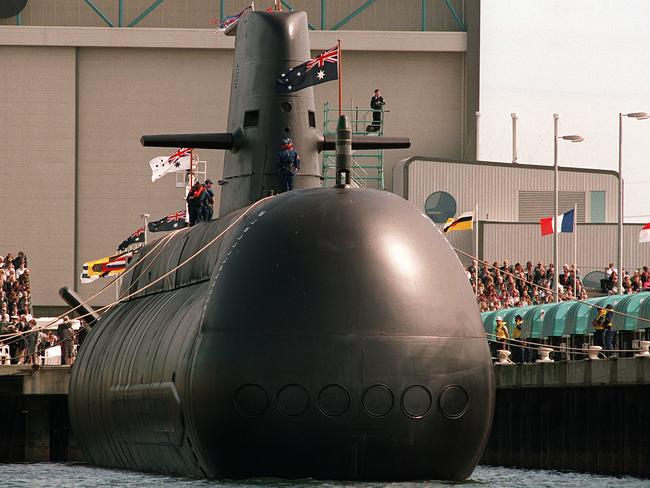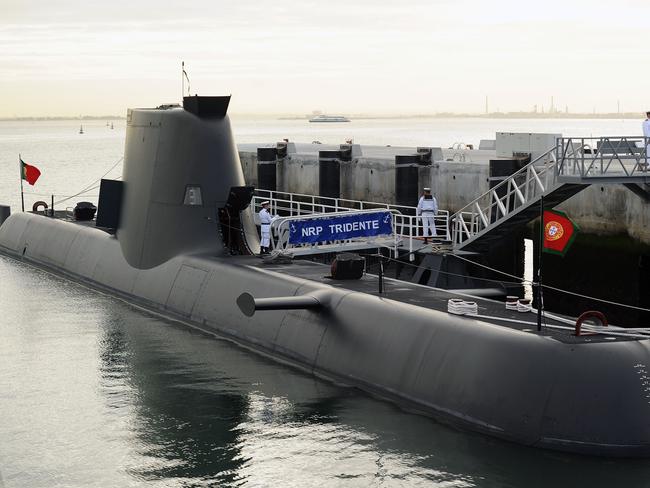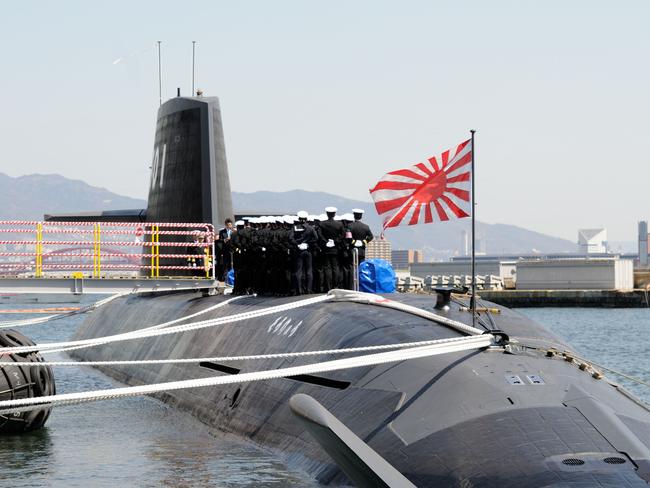Germany fights for Australian submarine defence contract after Japan makes a bid for it
AUSTRALIA needs costly new submarines and the world is racing to snare the multi-billion-dollar contract. Germany’s bid could be the most promising yet.
A HIGH-POWERED German submarine delegation is in Canberra to demand an open competition for the nation’s biggest ever defence contract — a new navy submarine.
German giant ThyssenKrupp Marine Systems (TKMS), the parent company of leading submarine builder HDW, has launched an aggressive bid to head off Japan for the multi-billion dollar job.
And in good news for thousands of shipyard workers at the ASC yard in Port Adelaide and elsewhere around the nation, TKMS said it would be happy to build the boats in Australia.
The company has built more than 160 diesel powered submarines and it has promised the Abbott Government that it could deliver 12 “ready for war” conventional submarines to replace the controversial Collins Class boats for $20 billion.
FOREIGN SUBS: Would cost Australia $29 billion

It said the boats could be either built at its shipyard in Kiel, Germany or at the ASC yard in Adelaide “risk free under a fixed price and fixed delivery contract”.
During the last election campaign the Coalition Government promised to build the boats at ASC in Port Adelaide, but it appeared to back away from the pledge in favour of the Japanese Soryu Class boat.
Navy shipbuilding expert Dr John White told a Senate inquiry yesterday that the Soryu option was “challenging” because Japan had never exported a submarine.

He also called for the establishment of a Submarine Construction Authority to oversee the vital project.
TKMS has guaranteed through-life support costs at between 10 and 20 per cent of the cost for Collins saving taxpayers billions of dollars.
The final decision on the submarine selection process will be included in the government’s 2015 Defence White Paper due out mid-next year.
Chief Financial Officer with TKMS Dieter Rottsieper is in Canberra this week on a high-level lobbying mission.

He told News Corp Australia that the company had completed a feasibility design of a new 90-metre-long, 4000-tonne boat — the HDW Class 216 — that met all the operational requirements of the Royal Australian Navy.
The existing HDW Class 214, that carries about 80 per cent of the systems to be used on the new boat, has a range of about 19,000km which is similar to the Collins boats.
“The main difficulty will be the integration of systems especially the acoustics and combat systems,” he said.

The Australian boats will use a US Navy combat system, but Mr Rottsieper said integrating American war fighting technology would not be a problem.
“We don’t see that as high risk. It is important to not only know how but to know why,” he said.
Unlike the Collins Class boats the intellectual property for the HDW boats is owned by TKMS and not the German Government.
“We would transfer all the technology to Australia,” Mr Rottsieper said.
“We have a schedule to deliver the first [Australian] boat by 2026.”



